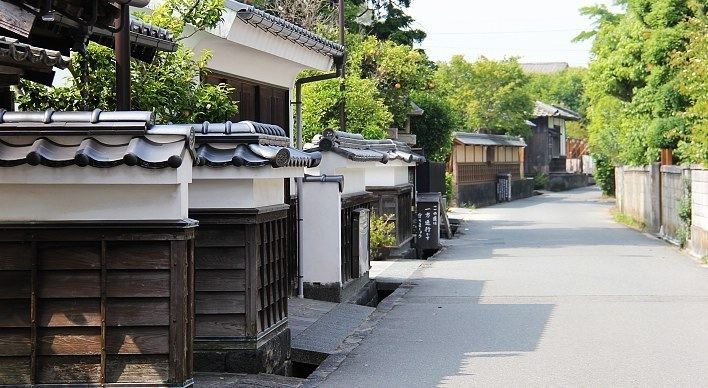Website www.city.hagi.lg.jp | Population 50,179 (31 May 2016) | |
 | ||
Time zone Japan Standard Time (UTC+9) Weather 7°C, Wind N at 26 km/h, 82% Humidity Points of interest Hagi Reverberating Furnace, musée de Hagi, Hagi Castle, Shōin Shrine, Tōkō‑ji Temple | ||
Hagi (萩市, Hagi-shi) is a city located in Yamaguchi Prefecture, Japan, which was incorporated on July 1, 1932.
Contents
- Map of Hagi Yamaguchi Prefecture Japan
- History
- Population
- Economy
- Hagi ware
- People
- Sister cities
- References
Map of Hagi, Yamaguchi Prefecture, Japan
As of May 31, 2016, the city has an estimated population of 50,179 and a population density of 71.80 of persons per km². The total area is 698.86 km².
History
In the medieval period, Hagi was dominated by the Yoshimi clan, who built Hagi Castle, the ruins of which can be visited today. The Mōri clan became daimyōs of Chōshū Domain at the beginning of the Edo period and built Hagi Castle at the foot of Mt. Shizuki in 1608. They transferred the capital of the domain from Hiroshima to Hagi at the same time. Since then, Hagi developed as the political center of Chōshū for over 250 years.
When the Meiji Restoration came about in the 1860s, as the result of efforts by samurai from Chōshū and a number of other domains, this small city gained great historical significance. Many Japanese statesmen and Prime Ministers were born and brought up in this city.
On March 6, 2005, Hagi absorbed the towns of Susa and Tamagawa, and the villages of Asahi, Fukue, Kawakami and Mutsumi (all from Abu District) to create the new, expanded city of Hagi.
Population
One of the factors underlying the continual decrease of population is said to be its poor public transport. Industry did not grow at all and the rapid economic growth of Japan only caused the town to decline. But it also kept the traditions alive and the traditional look of the town preserved.
Economy
Iwami Airport in nearby Masuda, Shimane Prefecture serves Hagi.
Tourism is a strong factor of the town.
Hagi ware
The city was the capital of the Chōshū Domain during the Edo period (ca. 1603–1868). Hagi is renowned for Hagi ware, a form of Japanese pottery dating from 1604 when two Korean potters were brought to Hagi by Lord Mōri Terumoto.
Hagi was also the location for an International Sculpture Symposium in 1981. Twenty-six international sculptors worked together to create a seaside park. They created many functional sculptures, including tables and benches.
People
Sister cities
Since 1968, Hagi has been a sister city to Ulsan (울산광역시, 蔚山廣域市 www.ulsan.go.kr), a fishing port and Korea Industrial capital of Hyundai motor's world's largist motor assembly compelex with proving ground and in-house port:capacity 1.5million unit per year, Hyundai heavy industries' world's top shipyards and largist petrochemical complex like SK & S-OIL refineries in the southeast of South Korea.
